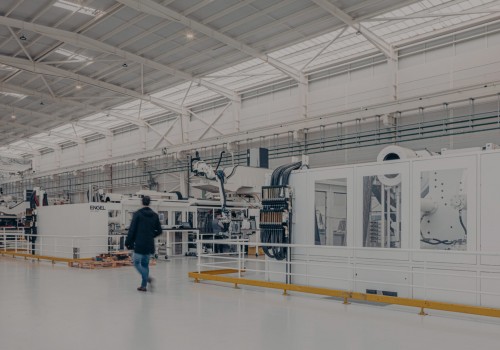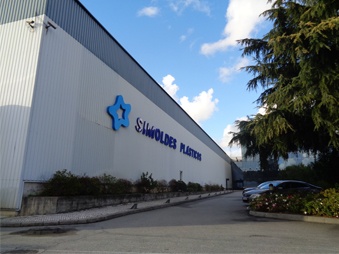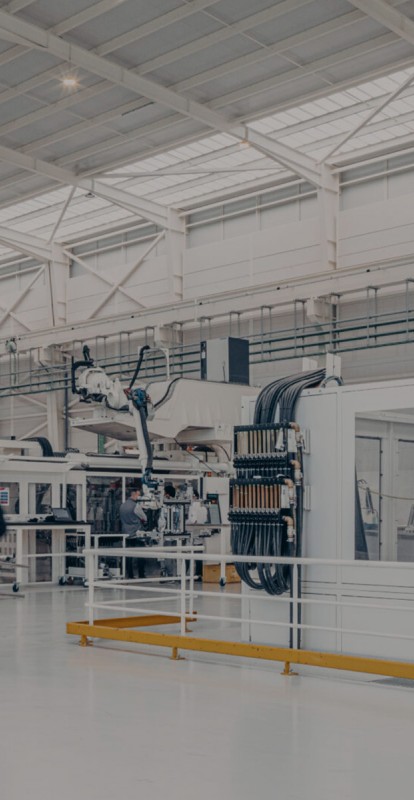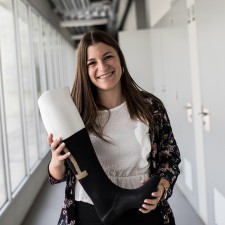
News
"Simoldes' involvement with research centers is undoubtedly a core driver for its success" - Simoldes
In an interview for Fibrenamics, Carla Silva, Project Manager in the R&D Department at Simoldes, highlights the drivers that allowed Simoldes to differentiate itself from the competition and meet the demanding requirements of the automotive industry.
Knowing that the automobile industry is one of the most competitive industries, what strategy did Simoldes adopt to differentiate itself from the competition?
To differentiate itself from the competition and based on the vast experience and know-how that Simoldes possesses, we adopted a strategy that includes: a) processes’ optimization, investment in new materials, implementation of a stock policy of just-in-time (JIT), costs optimization, flexibilization and optimization of human resources, investment on quality and performance improvement; b) innovation and development of new products, processes, and technologies with a controlled level of risk; c) investment in knowledge with a strong emphasis on the specialization and multidisciplinarity of human resources; d) research of new business areas, beyond the automotive area; e) achieving customer satisfaction by fulfilling technical, functional and legislative requirements and also f) involvement and cooperation with technological centers and universities, such as Fibrenamics and the University of Minho, to create synergies and added value for both parties.
In summary, it is by aggregating knowledge, differentiated products with added value, new competencies, and partnerships that Simoldes differentiates itself from the competition. We are also sensitive to environmental issues and because of that, we are constantly dedicated to the study of the impact that our products and processes may have in terms of ecological footprint.
Could Simoldes' involvement with research centers be seen as a core driver for its entrepreneurial success?
Simoldes' involvement with research centers is undoubtedly a core driver for its success. If, on the one hand, Simoldes has skills in time management, equipment, process, and human resources, the technological centers, on the other hand, have different skills – a more global overview of the technology available, scientific knowledge, other developments and access to papers and other scientific information to which the access is restricted. The combination of both industrial and technological backgrounds, so different yet complementary, turns the partnership into a multidisciplinary team that is cohesive and fruitful for both parties.

Image 1 - Simoldes Plásticos building in Portugal.
Going back to the automotive industry, and given that there’s an expectation for this sector to be one of the first few to achieve Carbon Neutrality by 2050, what contribution can Simoldes make to reach this goal?
There is an increasing demand for electric vehicles and Simoldes is a Tier 1 supplier of this industry. This means that we can directly contribute to Carbon Neutrality goals by 2050 with a) the manufacture of low-weight thermoplastic matrix components; b) the integration of materials with low carbon footprint, such as green materials (bio-based materials and reinforcements, recycled, refurbished); c) low density and d) the adoption of processes that favor circular economy, increasing the energy efficiency of processes and the supply chain.
Are composite materials part of the solution to achieve carbon neutrality in the automotive industry?
The carbon footprint is the total amount of greenhouse gas emissions that originate from the production, use, and end-of-life of a product or service which retains heat in the atmosphere and causes global warming. Thermoplastic matrix composite materials have the advantage of having lower density and weight when compared to metals. This results in lighter parts, lighter weight vehicles, fuel savings, and reduced emissions, as well as a lower impact on the manufacturing process, and lower equipment and production tools wear. All of this contributes to the reduction of the human footprint.
If we take a look at the evolution in this industry during the last decade, we can see a trend in replacing metals with polymer-based matrices based on sustainable and ecological materials with or without reinforcement. A clear example of polymer-based functional parts is the project that Simoldes is developing with Fibrenamics, the LH4Auto - Lighting and heating system for the Automotive industry. This project, besides having the development of a functional thermoplastic composite product with the capacity to emit light and heat as its main goal, it also aims its recyclability at the end of the product's lifetime.
Did you like this article? Join the Fibrenamics community by registering for free here.


